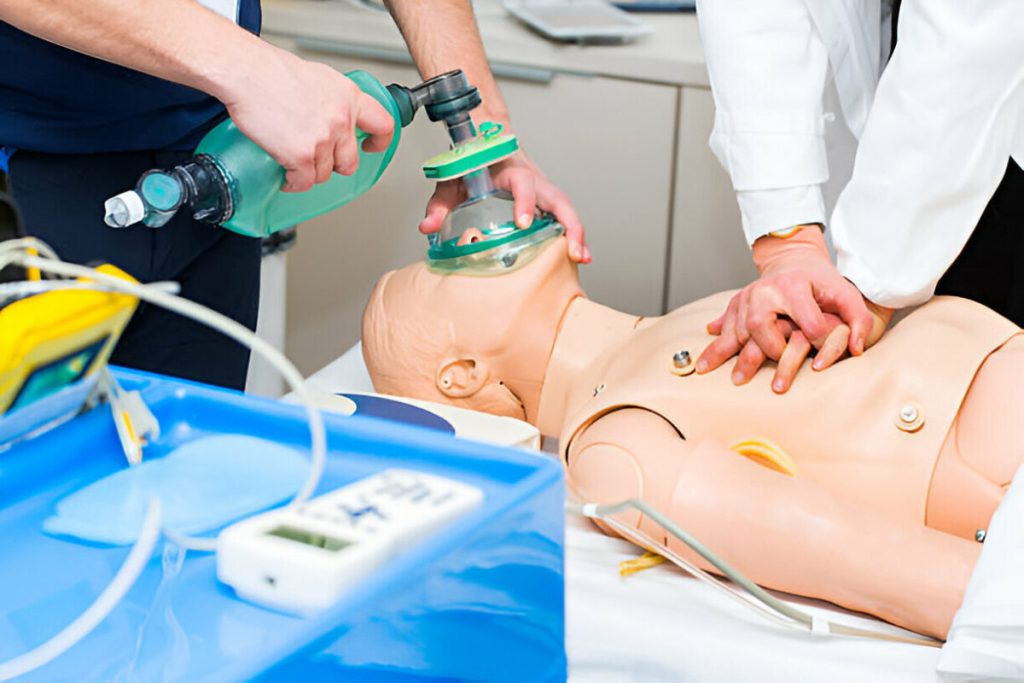When cardiac arrest strikes, every second counts. Performing CPR can mean the difference between life and death. However, many rescuers worry about causing rib fractures during chest compressions. While skeletal injuries can occur, proper technique significantly reduces this risk. Understanding correct hand positioning in CPR empowers you to save lives with confidence.
Understanding the Reality of CPR-Related Rib Fractures
Research shows that rib fractures occur in approximately 55% of adult CPR cases, making them a common but manageable side effect. A comprehensive study of 2,148 patients revealed that skeletal chest injuries occurred in 86% of males and 91% of females following resuscitation. These numbers might seem alarming, but they underscore an important truth: broken ribs heal, but cardiac arrest is fatal without intervention.
The key is minimizing unnecessary injury through proper technique. Studies indicate that non-healthcare providers are more likely to cause rib fractures due to a lack of training and experience. This highlights the critical importance of quality CPR education.
The Science Behind Correct Hand Positioning in CPR
Proper hand placement is your first line of defense against preventable injuries. Rescuers should position their hands correctly on the center of the chest, between the nipples, with interlaced fingers to provide a firm grip. This technique distributes compression force evenly across the sternum rather than concentrating pressure on individual ribs.
Biomechanical studies using finite element simulations demonstrate that compression location significantly affects both CPR effectiveness and fracture risk. When hands drift too far left or right, force concentrates on the ribs rather than the sternum. This increases fracture probability while reducing compression effectiveness.
Essential Elements of Correct Hand Positioning in CPR
Professional rescuers follow American Heart Association guidelines to optimize technique. Here’s how to achieve proper hand positioning:
Locate the Compression Point: Place the heel of one hand on the lower half of the sternum, in the center of the chest. This landmark sits just below the nipple line. Accuracy matters—even slight deviations increase injury risk.
Stack Your Hands Properly: Position your second hand directly on top of the first. Interlock your fingers and lift them off your chest. This prevents rib pressure and focuses force through your palms onto the sternum.
Maintain Body Alignment: Keep your shoulders directly over your hands with locked elbows. This position lets you use your body weight efficiently rather than arm strength alone. Proper alignment reduces fatigue and maintains consistent compression quality.
Monitor Compression Depth: Compressions should reach depths of 2 to 2.4 inches for adults. Too shallow, and blood flow remains inadequate. Too deep, and fracture risk escalates. Quality training teaches you to feel the right depth.
How Proper Technique Reduces Rib Fracture Risk
Improper hand placement, such as positioning too far left or right of the sternum, leads to rib fractures during CPR. When centered correctly, your compressions act on the flexible sternum rather than rigid ribs. The sternum can absorb and distribute force more effectively.
Think of it like pressing a lever. Apply force at the right point, and the mechanism works smoothly. Press off-center, and components strain and break. Your hands become precision tools when positioned correctly.
Additionally, proper technique prevents excessive force. Trained rescuers learn to compress adequately without overdoing it. They understand that effective CPR requires controlled power, not brute strength.
Special Considerations for Different Patient Populations
Age and health status affect fracture risk. Studies show that skeletal chest injuries increase with patient age. Older adults, particularly those with osteoporosis, have more brittle bones. This doesn’t mean you should compress less vigorously—it means technique becomes even more critical.
Research indicates that women are more likely than men to sustain chest injuries during CPR, partly due to bone density differences. However, the survival benefits of CPR far outweigh these risks for all patients.
For children, hand positioning adapts to smaller anatomy. One or two hands may be appropriate depending on the child’s size. Infant CPR requires even more specialized technique, using only two fingers positioned just below the nipple line.
What to Do If Fractures Occur During CPR
Even with perfect technique, fractures can happen. If you hear or feel a cracking sensation, continue compressions without hesitation. The primary goal of CPR is maintaining blood flow to vital organs, and interrupting compressions to address rib fractures significantly reduces resuscitation effectiveness.
Make subtle adjustments if needed. Verify your hand positioning and ensure you’re compressing straight down. Maintain the recommended depth and rate. Remember that fractured ribs heal, but brain cells die within minutes without oxygen.
The Critical Role of Professional CPR Training
Quality education transforms nervous bystanders into confident lifesavers. Professional training provides hands-on practice with realistic manikins that give feedback on hand placement, depth, and rate. You learn what correct technique feels like, building muscle memory that activates during emergencies.
Proper training reduces the risk of injury or broken ribs from CPR. Certified instructors teach you to recognize and correct common mistakes before they become habits. They explain the why behind each technique, deepening your understanding.
Training also addresses the psychological barriers that prevent action. Many people fear causing harm, but education shows you how to help effectively and safely. This confidence can save lives.
Beyond Basic Technique: Maintaining CPR Quality
Correct hand positioning in CPR extends beyond initial placement. Fatigue degrades technique over time. Studies show that rescuers drift off-center or reduce depth as exhaustion sets in. Quality training teaches you to monitor yourself and switch with other rescuers every two minutes when possible.
Allow complete chest recoil between compressions. Don’t lean on the chest during the relaxation phase. This lets the heart refill with blood, maximizing circulation with each subsequent compression.
Maintain a steady rhythm of 100 to 120 compressions per minute. This rate optimizes blood flow without excessive force. Many people find it helpful to compress to the beat of songs like “Stayin’ Alive” that match this tempo.
Getting Certified: Your Next Step
Understanding correct hand positioning in CPR is just the beginning. Hands-on certification ensures you can apply this knowledge when it matters most. Whether you’re a healthcare provider needing BLS certification or a community member wanting to be prepared, proper training makes all the difference.
CPR Tampa, an American Heart Association training site, offers comprehensive certification courses that cover every aspect of lifesaving techniques. Initial certifications and renewals are available in BLS for Healthcare Providers, ACLS, PALS, and CPR and First Aid. All classes emphasize stress-free, hands-on learning that builds real competence.
Don’t let fear of causing injury prevent you from learning this vital skill. Proper technique minimizes risks while maximizing survival chances. The confidence that comes from quality training empowers you to act decisively during emergencies.
Take the next step in your lifesaving journey. Contact CPR Tampa today to enroll in BLS classes in Tampa or schedule your CPR certification in Tampa. Your training could save a life—perhaps someone you love. Visit CPR Tampa and transform yourself into a confident, capable rescuer who knows exactly how to help when it matters most.





